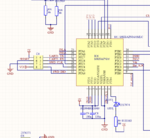snipex
Junior Member level 3
Hi!
I have encountered a really weird problem that I can't solve.
Problem occurs after I power cycle the microcontroller. I load the program using debug or run in S32 design studio (Eclipse) and after I power cycle the device nothing starts.
Reseting the target without power cycling works fine.
I had a programmer look at my code and it's ok.
I am using NXP's KEAZN64 ARM mircoprocessor.
Do you have any idea what may be cousing this?
I have encountered a really weird problem that I can't solve.
Problem occurs after I power cycle the microcontroller. I load the program using debug or run in S32 design studio (Eclipse) and after I power cycle the device nothing starts.
Reseting the target without power cycling works fine.
I had a programmer look at my code and it's ok.
I am using NXP's KEAZN64 ARM mircoprocessor.
Do you have any idea what may be cousing this?






